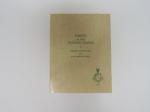|
This section contains 387 words (approx. 2 pages at 300 words per page) |
The pituitary gland, or hypophysis cerebri, is a smallendocrine gland, measuring approximately 1.3 cm (0.5 in), and is situated at the base of the brain, cradled in a fossa of the sphenoid bone. While the pituitary gland controls several other endocrine glands, it is controlled by the hypothalamus, to which it is physically connected. There are three anatomical regions of the pituitary, the anterior and posterior lobes, and an intermediate zone whose function is not well understood. The pituitary develops in the embryo from the neural tube and the primitive digestive tube, forming the posterior and anterior lobes, respectively. Both lobes secrete hormones responsible for maintaining homeostasis.
The posterior lobe, or neurohypophysis, directly receives neurosecretions from the hypothalamus by way of axons that originate in the nerve cells of the hypothalamus, so the posterior lobe actually does not synthesize hormones, but rather releases neurosecretions, or neurohormones, made in the hypothalamus. The two primary hormones released by the posterior lobe are vasopressin or antidiuretic hormone (ADH), which helps control blood pressure, and oxytocin, a hormone responsible for the release of breast milk and the contraction of smooth muscles, particularly the uterus.
The anterior pituitary, or adenohypophysis, is the larger of the two lobes, and makes up approximately three quarters of the entire pituitary gland. Its relationship to the hypothalamus is circulatory. The anterior lobe receives neurosecretions via capillaries from the hypothalamus. These neurosecretions regulate the production and the release of seven hormones which affect specific target organs in the body. Other hormones secreted by the anterior lobe include, thyroid stimulating hormone (thyrotropin) which stimulates thethyroid gland, adrenocorticotropic hormone (ACTH), which acts on the adrenal glands to produce various steroid hormones, as well as two gonadotropic hormones, called FSH and LH, which stimulate egg and sperm production. Another hormone, prolactin, is thought to have appeared early in the evolution of vertebrates, and is responsible for stimulating milk production--it is not, however, to be confused with oxytocin, which stimulates the release of milk out of the mammary ducts. Melanostimulating hormone (MSH) influences the dispersion of pigment granules in melanocytes, determining the lightness or darkness of skin. Growth hormone, prolactin, and MSH are controlled by releasing hormones and release-inhibiting hormones produced by the hypothalamus. The other hormones produced by the anterior lobe are controlled through a negative feedback mechanism.
|
This section contains 387 words (approx. 2 pages at 300 words per page) |


